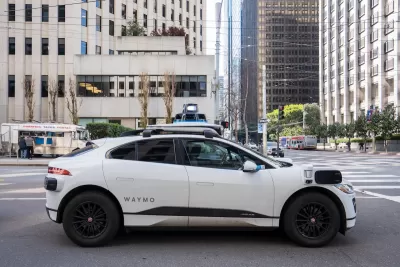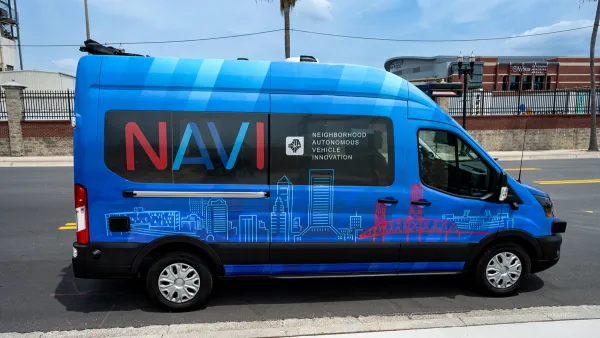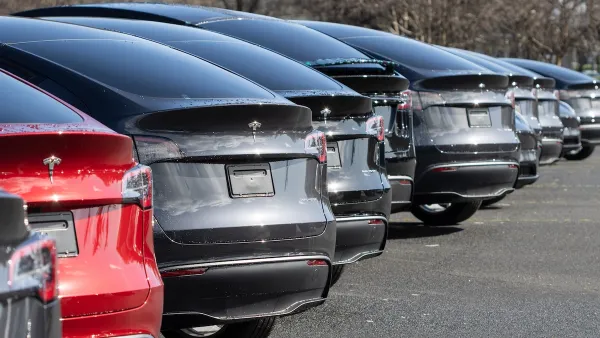Recent efforts to paint autonomous ride-hailing services as a complement to public transit are, according to CityLab’s David Zipper, greenwashing.

Is autonomous ride-hailing “an asset to cities and transit agencies?” In a piece for Bloomberg CityLab, David Zipper questions this assertion, which robotaxi companies are eager to make. “Transit-robotaxi synergy is an enticing message at a time when public transportation agencies face a dire funding shortage, and it could especially resonate among left-leaning residents in places like the Bay Area who value buses and trains even if they seldom use them.”
But the industry is “a wolf in sheep’s clothing,” Zipper warns. After outlining the potential problems with a Waymo promotion that encourages people to get dropped off at Bay Area transit stations, Zipper notes that “According to a 2022 study of the region, just 0.4% of the region’s transit journeys included a ride-hail trip.”
Automobiles inflict damage that many cities are now trying to reverse by encouraging transit or biking, which are far more space-efficient and sustainable than even an electric car, autonomous or not.
Zipper adds that autonomous ride-hailing will likely follow the same pattern as its human-driven predecessors, which did not yield an increase in transit trips and often created more congestion. “In fact, a surge in self-driving cars would likely be a net negative for transit (even if the vehicles do not squat on transit lines and bus stations, as has happened repeatedly in San Francisco).”
FULL STORY: Robotaxis Are No Friend of Public Transportation

Maui's Vacation Rental Debate Turns Ugly
Verbal attacks, misinformation campaigns and fistfights plague a high-stakes debate to convert thousands of vacation rentals into long-term housing.

Planetizen Federal Action Tracker
A weekly monitor of how Trump’s orders and actions are impacting planners and planning in America.

In Urban Planning, AI Prompting Could be the New Design Thinking
Creativity has long been key to great urban design. What if we see AI as our new creative partner?

King County Supportive Housing Program Offers Hope for Unhoused Residents
The county is taking a ‘Housing First’ approach that prioritizes getting people into housing, then offering wraparound supportive services.

Researchers Use AI to Get Clearer Picture of US Housing
Analysts are using artificial intelligence to supercharge their research by allowing them to comb through data faster. Though these AI tools can be error prone, they save time and housing researchers are optimistic about the future.

Making Shared Micromobility More Inclusive
Cities and shared mobility system operators can do more to include people with disabilities in planning and operations, per a new report.
Urban Design for Planners 1: Software Tools
This six-course series explores essential urban design concepts using open source software and equips planners with the tools they need to participate fully in the urban design process.
Planning for Universal Design
Learn the tools for implementing Universal Design in planning regulations.
planning NEXT
Appalachian Highlands Housing Partners
Mpact (founded as Rail~Volution)
City of Camden Redevelopment Agency
City of Astoria
City of Portland
City of Laramie





























